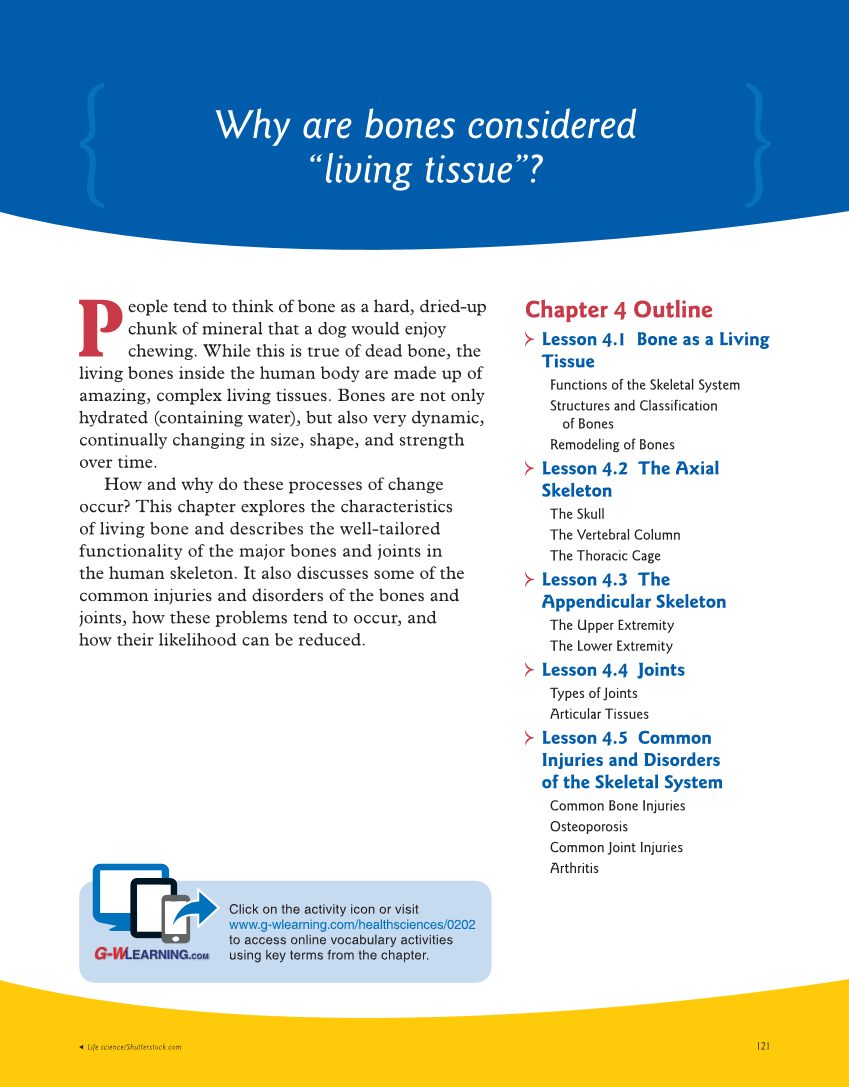121 Life science/Shutterstock.com Why are bones considered “living tissue”? Click on the activity icon or visit www.g-wlearning.com/healthsciences/0202 to access online vocabulary activities using key terms from the chapter. P eople tend to think of bone as a hard, dried-up chunk of mineral that a dog would enjoy chewing. While this is true of dead bone, the living bones inside the human body are made up of amazing, complex living tissues. Bones are not only hydrated (containing water), but also very dynamic, continually changing in size, shape, and strength over time. How and why do these processes of change occur? This chapter explores the characteristics of living bone and describes the well-tailored functionality of the major bones and joints in the human skeleton. It also discusses some of the common injuries and disorders of the bones and joints, how these problems tend to occur, and how their likelihood can be reduced. Chapter 4 Outline Lesson 4.1 Bone as a Living Tissue Functions of the Skeletal System Structures and Classification of Bones Remodeling of Bones Lesson 4.2 The Axial Skeleton The Skull The Vertebral Column The Thoracic Cage Lesson 4.3 The Appendicular Skeleton The Upper Extremity The Lower Extremity Lesson 4.4 Joints Types of Joints Articular Tissues Lesson 4.5 Common Injuries and Disorders of the Skeletal System Common Bone Injuries Osteoporosis Common Joint Injuries Arthritis
